I’m a huge nerd for folklore, and I see it everywhere. Everywhere. Have you ever considered, for instance, that Weekend at Bernie’s is actually derived from a long tradition of stories about propping up corpses so people won’t know they’re dead? It’s true! Old stories find a way to live on in whatever form they can.
As we careen towards the premier of Avengers: Age of Ultron, I’ve started thinking about the old stories that are living on in the form of superheroes. Some have made the argument that in our culture, the popularity of superheroes has risen so that we might sate our longing for fallible and diverse gods. I don’t know about that, but I do know that folklore and mythology infuses everything we make, whether or not we are aware of it. Which makes the Avengers folk, at least from where I’m standing…
Captain America and the King Under the Mountain
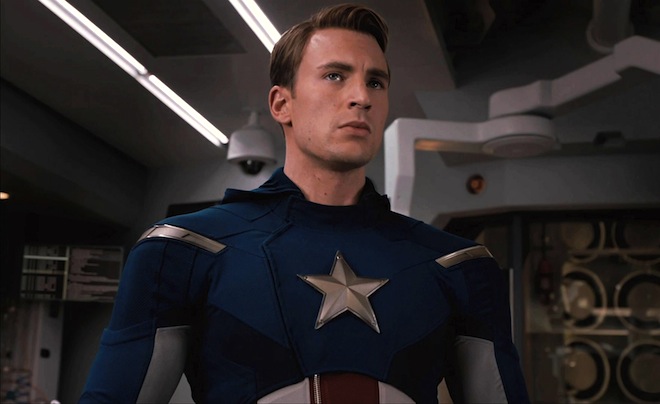
Captain America sleeps under the ice for 70 years and then awakes to save his country from evil. Sound familiar? It should, because King Arthur was sleeping under various hillsides around Britain for hundreds of years before Steve Rogers was even a glimmer in Marvel’s bank account. He slumbers in this cave or that mound, or maybe off on the Island of Avalon, and he will someday wake in Britain’s greatest hour of need. And Arthur is only one of many slumbering heroes of old: all of Europe is littered with sleeping kings and generals. Bran the Blessed, Fion Mac Cumhaill, and even Charlemagne are literally lying around waiting for their big moment. All of these figures are tied together by their military importance and their remote napping location, and that holds true for Captain America—though it seems like he was lucky he only had to wait 70 years to get back into the action!
Iron Man Scares Faeries

Iron itself is a material with great folkloric significance. For hundreds of years it has been used as a safety measure against dangerous supernatural beings, like those sonic rodent repellant devices, only for faeries and witches instead of mice. This goes back to the cultural importance of iron and the shift that took place once people figured out how to make iron weapons that smote a whole lot better than the old ones. There’s a reason the Iron Age sounds a lot more badass than the Bronze Age. That significance has stuck with us, and continues to make iron a symbol of domination. What better material to represent a hero who uses technology instead of nature and reigns as a king of industry?
Thor Is Literally From Norse Mythology
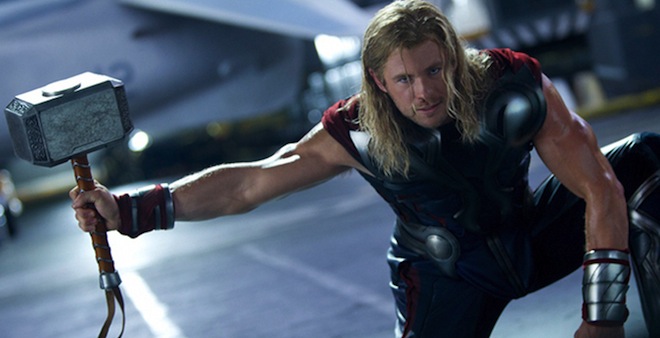
Do we even need to talk about this?
The Incredible Hulk Goes Berserk
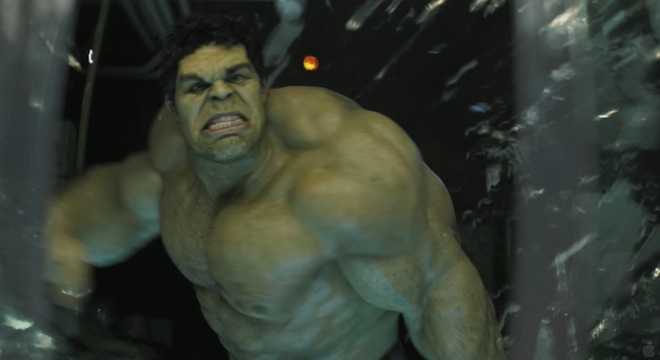
There is an incredibly long tradition of men transforming into beasts in order to become ultimate fighting machines. It was believed that Norse and Celtic warriors would go into berserker rages and take on the fighting ability of wolves and bears. They “bit on their shields, and were as strong as bears or bulls; men they slew, and neither fire nor steel would deal with them; and this is what is called the fury of the berserker.” This is a quote from the Ynglingasaga, written in 1225, but it could just as easily describe the Hulk. Preview footage from Age of Ultron shows Black Widow calming the Hulk, which draws from the ancient belief that women can control the rage of a berserker. One day the berserker Cu Chulainn was riding back towards his village in a frenzy after a battle, and the village, terrified that he would accidentally destroy his own home, sent all the women out on the battlements to flash him. Overcome by the sight of them, he broke his rage and was able to return safely home. The Avengers should count themselves lucky that Black Widow is a student of Irish mythology, although Natasha’s methods obviously involve more clothing and a more nuanced understanding of psychology.
Hawkeye, Man In Tights
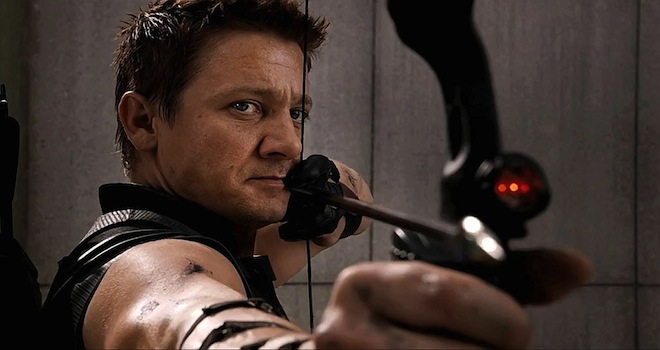
We haven’t learned a lot about Hawkeye from the movies yet, but the image of a man who fights with a bow and arrows is about as folkloric as it gets. Like Robin Hood, Hawkeye is so good with a bow that it doesn’t matter that he’s battling alongside (or against) people who are bigger and stronger than he is. He fights with skill and talent. Both in the movies and the comics, Hawkeye also occasionally finds himself on the wrong side of the fight, going against the status quo and making himself an outlaw of sorts. This connection to a figure that is such a big part of our cultural landscape is what enables Hawkeye to hold his own alongside beings of godlike power.
Black Widow: La Belle Dame Sans Giving a Shit
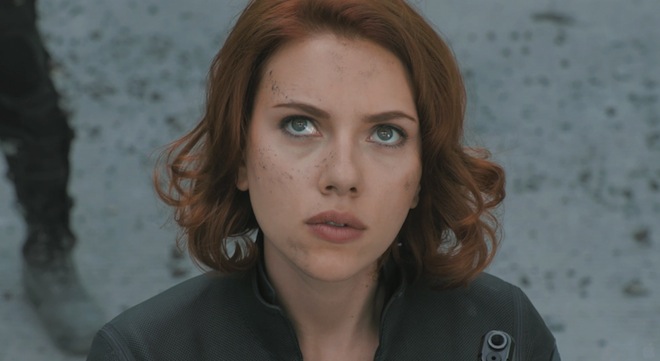
The femme fatale is a very popular figure in pop culture. Black Widow uses her smarts and beauty to trick people, and is constantly underestimated. In folklore, the femme fatale has been beguiling her way across the patriarchal landscape for centuries. In ancient Greece, Circe charmed Odysseus and his crew for her own purposes; in biblical times, Salome used her beauty to rid John the Baptist of his head; and from the Middle Ages to the Romantic Era, poets have fretted about the deadly charms of La Belle Dame Sans Merci. Perhaps the femme fatale is so popular because she offers a way of wielding power to women who might otherwise be disenfranchised. One need only look at an Avengers poster to see that Black Widow is the lone woman in a sea of sausage, so it seems fitting that her character aligns with this mythic archetype.
If you’d like to hear more of my thoughts on the Avengers and their folkloric links, you can check out the folklore and pop culture podcast Fakelore. Our last episode discusses Captain America and the King Under the Mountain at greater length, and also touched on other influences, including Rip Van Winkle, Thomas the Rhymer, and early American heroes.
Caitlyn Paxson is a writer and storyteller. She has pursued studies in writing, folklore, and performance in the United States, Canada, England, Scotland and France. Past jobs include being an artistic director of storytelling performances, a fiber arts consultant, a legal document and poetry transcriber, and a shepherdess. She is an editor at Goblin Fruit, can sometimes be found discussing folklore and pop culture on the Fakelore Podcast and performing with the Banjo Apocalypse Crinoline Troubadours.










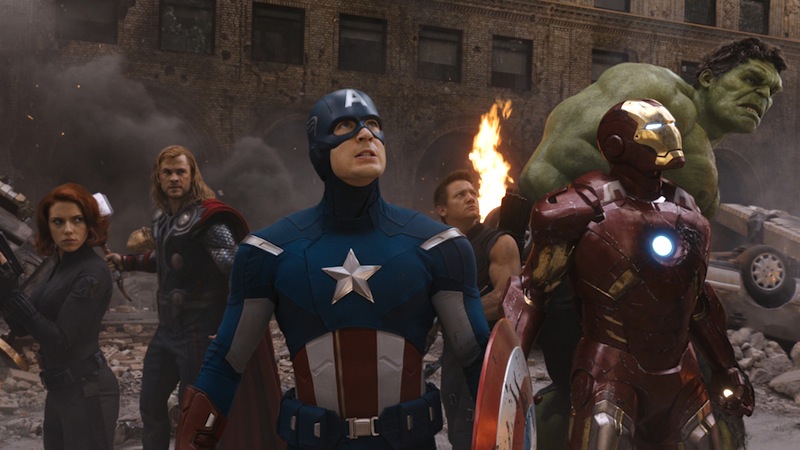
This is a fantastic and fascinating article! I’m also excited to check out your podcast – sounds right up my alley.
I understand you’re talking archetypes and thus painting with broad strokes, but had to stick up for Salome. Her mother, Herodias, used her to get what she, Herodias, wanted. Granted, Salome danced her dance and made her request, but who knows how much free agency she really had? Black Widow, of course, has free agency to spare! But I grant your larger point, that Salome has (rightly or wrongly) become an emblematic femme fatale.
Again, thanks for a fun and thought-provoking post!
I love the idea of Cap as King Arthur, too. Life-long Arthurian fan, but it had never hit me. Maybe because Cap seems to have all of Arthur’s virtues and none of his faults. Whereas Arthur embodies Britian at its best but warts-and-all, Steve Rogers embodies America’s ideal version of itself. Interesting contrast.
Hulk’s pretty much a werewolf story, innit?
The Hulk is Dr. Banner’s Mr. Hyde. A hulking monster released by a genius’ dark side after said genius took a chemical concoction. He’s Mr. Hyde.
Brian Blessed isn’t asleep! He’s been awake–and ALIVE!–for quite some time. Surely you’ve heard him.
While Cap works as The Once and Future King NOW, that’s not how his story started. What archetype do you place his origin in.
@1 – Thank you, you said exactly what I wanted to say about Salome. Hardly somebody I’d consider a folk hero, at any rate. (Not to mention, the behading of John the Baptist is hardly a ‘heroic’ act).
If you do want a Biblical femme fatalle, I’d perhaps suggest Judith from the Apocrapha ;) For one thing, she can cut her own heads, thank you very much…
Per Aeryl’c comment, wouldn’t pre-Big-Sleep Captain America be more a retelling of ordinary guy David (Cap) vs. Goliath (the Nazis)?
Also all the Jungian themes of facing one’s dark side, dying and returning to life with new insight, and so on, show up in every story. Epic battles to save the earth from the forces of evil, and so on.
I always saw them as more archetypes of the Gothic, but I love the comparison of Cap and Arthur, I’d never spotted that.
You know Cyclops from the X-Men appears in a fairytale called The Six Servants along with some other mutants :) .
I would have thought Tony is more Lancelot than anything else. The noble but flawed knight in shining armor. Same with Cap pre-freezing. He’s still Arthur, but the young and noble Arthur who is forging Camelot. He was the one that the serum worked on, the chemical sword in the stone, and noble enough to handle that power. The big question is who is playing Merlin?
Or alternatively, prepopsicle!Cap is Gawain, the noblest of knights who got into a bad deal with a color themed villain.
Steve Rogers’ clearest mythic archetypes are from the Knights of the Round Table – his back story has a lot of resonance with the story of Perceval (kid out of nowhere becomes a Knight by virtue of, well, virtue), but there’s also elements of Lancelot (the unbeatable champion), Arthur (the whole King Under the Mountain thing, as well as the leadership role) and Galahad (strength is as the strength of ten because his heart is pure). Steve also taps into the old, old story of the Corn God/King – the demi-deity figure who dies for the good of the kingdom (especially when you consider he only had a “lifetime” in his original “incarnation” of about three years [1942 – 1945]… now which other cultural hero do we know of who appeared out of nowhere, caused fear, uncertainty and doubt among his enemies for three years, then sacrificed himself to save the world?) and then returns later, stronger and more powerful.
Tony Stark’s role as Iron Man (the symbolic destroyer of magical power) is also accentuated by his known canon distaste for magic (which is interesting, since in at least one part of the Marvel multiverse, Tony Stark is the Sorceror Supreme rather than Stephen Strange). Otherwise, of course, he’d be the court wizard – in fact it can be argued he still is, it’s just he’s a wizard with a strong grasp of Clarke’s third law (the one about “sufficiently advanced technology”).
Bruce Banner and The Hulk is a straight lift of Jekyll and Hyde – his literary origins are quite clear. But then, Stephenson was taking archetypes from the myth of the werewolf (the human who transforms into an animal) and various other myths which have animals transforming into humans and vice versa. The berserkers are one aspect of that (it’s argued that berserkers and similar warrior archetypes are the ones who led to the story of the werewolf; then again, the same can be argued for the presence of sociopathic individuals in isolated communities).
Hawkeye in many ways taps into the myth of Robin Hood, and his latter day archetypes (Ned Kelly, Jesse James etc) – the notion of the person whose purpose is to redress the social balance. But Hawkeye’s main mythic resonance from the comics – the repentant criminal – comes from the biblical story of the Crucifixion. Hawkeye’s archetype is the thief who repents on the cross and is forgiven by Christ there. He’s a straightforward redemption arc (Iron Man largely snags this story line in the MCU), the guy who did bad things in the past, but is now trying to redeem himself through good deeds. It’s more of a Catholic redemption tale than a Calvinist one, which is why it’s hard to recognise in the cultural myths of the USA, which is a very Calvinist nation. (Which, I suspect, is why the role is handed to Tony Stark in the movies – there’s an underlying cultural disapproval of “buying” one’s redemption which comes through).
(I’m sorry, but La Belle Dame Sans Merci lost all her terror for me once I heard the Flanders and Swann translation of the term as “the beautiful lady who never says thank you“.) Natasha Romanov gets her mythic resonances from a lot of places – she borrows from Aphrodite in the sense of “dangerous beauty”; the Celtic Morrigan as a war goddess; but I’d argue her cinematic icon actually pulls a lot of resonance from Artemis – the virgin huntress. (We don’t actually see Natasha seducing people in the films. She charms them, yes, but she’s never actually shown as being overtly sexual. Instead, she really projects a strong layer of “touch me not” – and she’s quite capable of destroying those who would try.) She’s also got aspects of Athena – she’s all about battle planning and strategy and thinking things through, as well as having the aspects of Athena as the weaver of plans in there. So oddly enough, despite being overtly created as a hugely seductive figure, the Black Widow gets most of her mythic weight from two of the strongest virgin archetypes out there.
@10:
And what about that story about a man’s peculiar five servants? In case you don’t know, these servants are: a very big and fat man, an incredibly tall man who can stretch himself, a man with incredible hearing, a man with incredibly far-reaching sight, and a man who feels cold when warm and warm when cold (as a result he can’t burn in a fire). Now YOU tell me who these five remind you of.
@6/Lisamarie: Right, Judith! She didn’t immediately occur to me because we Protestants are stuck with Judith-less Bibles. ;) But we do have Jael. Now there’s a biblical Black Widow!
@13/Owlay: I’ve always assumed the Fantastic Four have an archetypal parallel in the ancient elements: Reed as water (because he’s fluid), Sue as wind (invisible, but you can feel its effects – even more so once she got force field power), Ben as earth (rocky), and Johny as flame (self-evident). Maybe I’m off base, or maybe this has been common knowledge for years. I’m intrigued by these mentions of the five peculiar servants…. Is that like the story of The Five Chinese Brothers? (I don’t expect that book passes PC tests these days, but I sure did love it as a kid.)
Another traditional sleeping king under the mountain is King Wenceslaus, who is better known for being immortalized in a well-known Christmas carol. Like Arthur, he is best known for being a good man.
It’s kind of funny when you consider that sleeping in the ice wasn’t part of Captain America’s original character concept; it was simply something they came up with as a gimmick to reintroduce him a couple of decades later.
In my opinion, Cap’s origin is not based on any sort of ancient myth. Instead, it is simply wish fulfilment on the part of Kirby and Simon–what any good Jewish kid at that time would want to do–punch that no good son of a bitch Hitler right in his disgusting face.
Hmm I would use Jael instead of Salome. For one thing Salome didn’t want or need John’s head, that was her mother’s request. Jael on the other hand used her wiles to lure Sisera to her tent, entertained him and then hammered a spike into his head. Or the harlot Rahab who was smart and demanded protection from the spies she harboured in her home.
If you want to learn more about Thor, Loki, and the Norse Gods and Goddesses plus much more, check out the book Odin’s Chosen: A Handbook of Asatru at:
lulu.com/guardians
or
barnes and noble “Odin’s Chosen: A Handbook of Asatru”
When I read the title of this article, I immediately thought of Tony Stark and the god Haphaestus/Vulcan, the smith. Tony is an engineer, and he makes/forges his own armor and weapons. We see that literally whether he is in the cave in Afghanistan or in his workshop in Malibu.
@16 I agree, but at the same time, in so doing they drew on Jewish archetypes such as the aforementioned David. Many early comics were informed by a distinctly Jewish (rather than Christian) messianism, which of course itself stems very strongly from the Jewish tradition of what David was like.
There’s a couple of fun books on the Jewish folkloric and cultural influence in comic books. Stan Lee has said,I believe, that Hulk was in part based on the Golem (as can be seen in the way he was initially drawn as much more earth-like, before he was green).
Up, Up, and Oy Vey: How Jewish History, Culture, and Values Shaped The Comic Book Superhero
Superman Is Jewish?: How Comic Book Superheroes Came to Serve Truth, Justice, and the Jewish-American Way
@21 Thanks for those links. I have also heard that Ben Grimm’s form as the Thing was inspired by stories about golems. In his original clay-like form, the inspiration was even more apparent.
Ahaha, this is rich, thank you!!